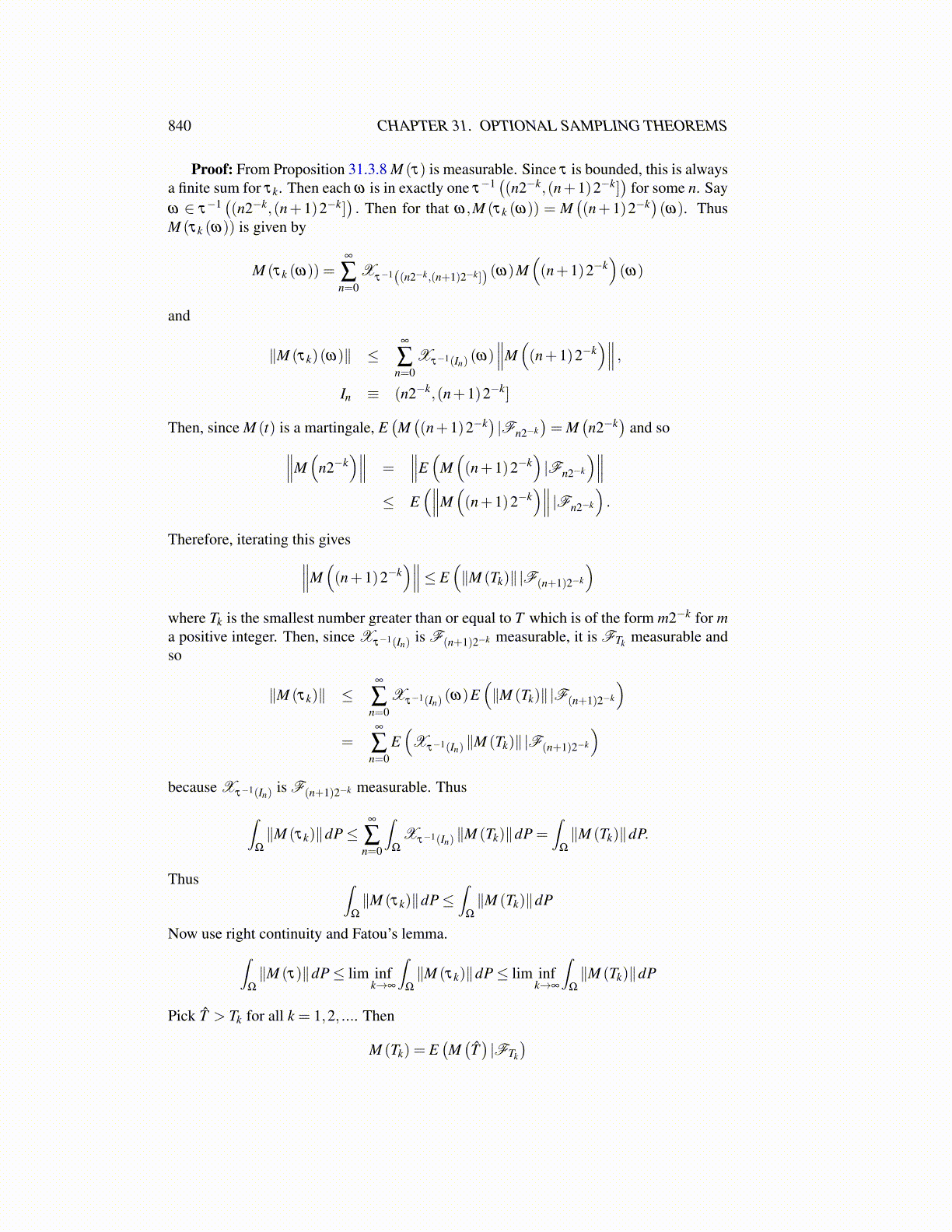
840 CHAPTER 31. OPTIONAL SAMPLING THEOREMS
Proof: From Proposition 31.3.8 M (τ) is measurable. Since τ is bounded, this is alwaysa finite sum for τk. Then each ω is in exactly one τ−1
((n2−k,(n+1)2−k]
)for some n. Say
ω ∈ τ−1((n2−k,(n+1)2−k]
). Then for that ω,M (τk (ω)) = M
((n+1)2−k
)(ω). Thus
M (τk (ω)) is given by
M (τk (ω)) =∞
∑n=0
Xτ−1((n2−k,(n+1)2−k]) (ω)M
((n+1)2−k
)(ω)
and
∥M (τk)(ω)∥ ≤∞
∑n=0
Xτ−1(In) (ω)∥∥∥M((n+1)2−k
)∥∥∥ ,In ≡ (n2−k,(n+1)2−k]
Then, since M (t) is a martingale, E(M((n+1)2−k
)|Fn2−k
)= M
(n2−k
)and so∥∥∥M
(n2−k
)∥∥∥ =∥∥∥E(
M((n+1)2−k
)|Fn2−k
)∥∥∥≤ E
(∥∥∥M((n+1)2−k
)∥∥∥ |Fn2−k
).
Therefore, iterating this gives∥∥∥M((n+1)2−k
)∥∥∥≤ E(∥M (Tk)∥|F(n+1)2−k
)where Tk is the smallest number greater than or equal to T which is of the form m2−k for ma positive integer. Then, since Xτ−1(In) is F(n+1)2−k measurable, it is FTk measurable andso
∥M (τk)∥ ≤∞
∑n=0
Xτ−1(In) (ω)E(∥M (Tk)∥|F(n+1)2−k
)=
∞
∑n=0
E(Xτ−1(In) ∥M (Tk)∥|F(n+1)2−k
)because Xτ−1(In) is F(n+1)2−k measurable. Thus
∫Ω
∥M (τk)∥dP≤∞
∑n=0
∫Ω
Xτ−1(In) ∥M (Tk)∥dP =∫
Ω
∥M (Tk)∥dP.
Thus ∫Ω
∥M (τk)∥dP≤∫
Ω
∥M (Tk)∥dP
Now use right continuity and Fatou’s lemma.∫Ω
∥M (τ)∥dP≤ lim infk→∞
∫Ω
∥M (τk)∥dP≤ lim infk→∞
∫Ω
∥M (Tk)∥dP
Pick T̂ > Tk for all k = 1,2, .... Then
M (Tk) = E(M(T̂)|FTk
)